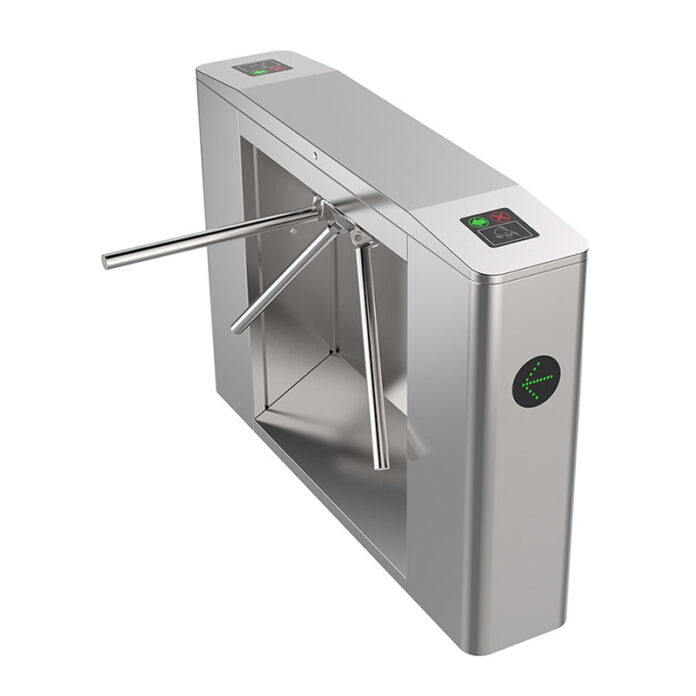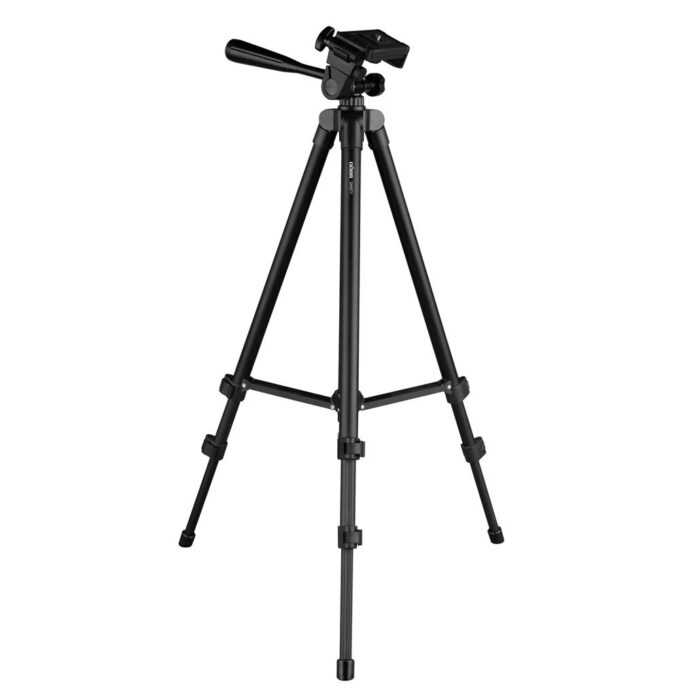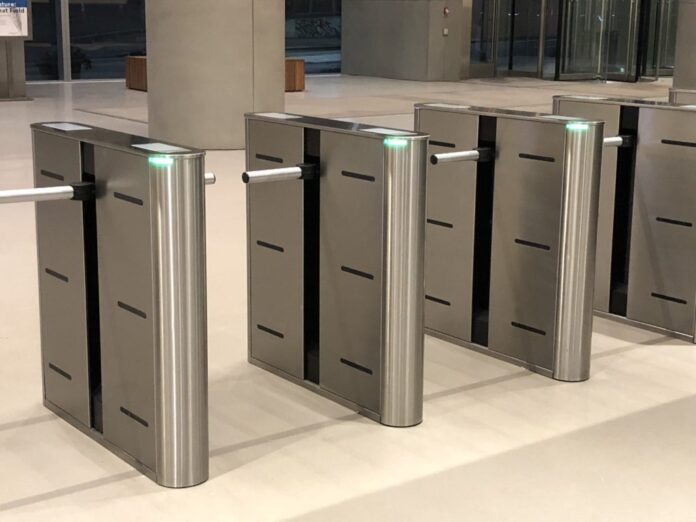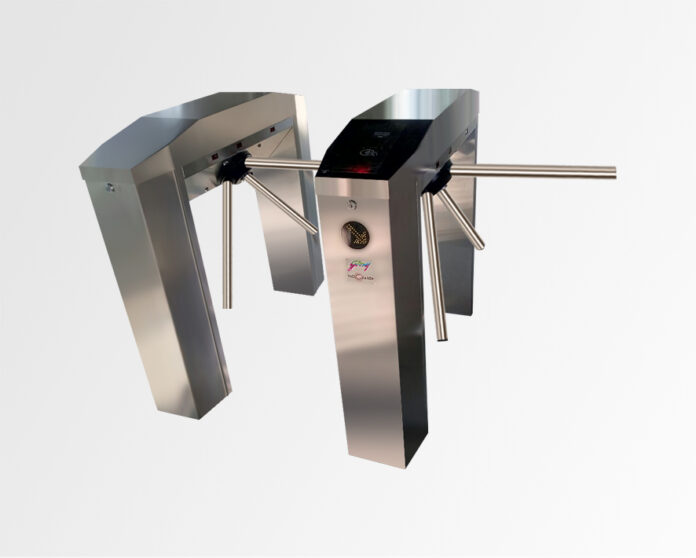Tripod turnstiles are a popular type of pedestrian access control system used in a variety of settings, from public transportation stations to sports arenas to office buildings. These turnstiles are designed to allow for quick and efficient passage of individuals while ensuring security and preventing unauthorized access.
A tripod turnstile typically consists of three rotating arms mounted on a central post, which can be configured to rotate in one or both directions. Individuals must pass through the turnstile one at a time, with the arms rotating to allow passage only to those who have been authorized.
The key advantages of tripod turnstiles

There are several key advantages to using tripod turnstiles. One of the most significant is their ability to handle high volumes of pedestrian traffic. Tripod turnstiles in FBMecasystem are designed to allow for quick and efficient passage of individuals, which can be particularly useful in high-traffic areas such as transportation hubs or sports arenas.
Another advantage of tripod turnstiles is their flexibility. These turnstiles can be customized to meet the specific needs of a particular setting or application. For example, a tripod turnstile in a high-security facility may include biometric scanners to ensure that only authorized personnel are allowed to enter. While a turnstile in a public transportation station may simply use ticket readers or contactless payment systems to grant access to riders.
Tripod turnstiles can also be integrated with other security systems, such as video surveillance or alarm systems. This integration allows for a more comprehensive approach to security, with multiple systems working together to protect property or building.
When it comes to selecting a tripod turnstile system, there are a few key factors to consider. One of the most important is the level of security required for the particular setting. High-security facilities may require more advanced systems, such as biometric scanners or multi-factor authentication, while lower-security environments may be adequately served by simpler systems, such as ticket readers or contactless payment systems.
Another consideration is the scalability of the system. As the needs of a particular setting change over time, it may be necessary to expand or modify the turnstile system. Choosing a system that is easily scalable can help to future-proof the system and prevent the need for a costly overhaul down the line.
Finally, cost is always a factor when it comes to selecting a turnstile system. While tripod turnstiles can be highly effective at improving security and efficiency, they can also be expensive to install and maintain. Choosing a system that strikes the right balance between cost and effectiveness is crucial for ensuring that the investment pays off over the long term.
In addition to traditional tripod turnstiles, there are also several other types of turnstiles that may be appropriate for certain settings or applications. These include:
Full-height turnstiles
Full-height turnstiles are designed to prevent unauthorized access by completely blocking the passage of individuals who have not been authorized. These turnstiles are often used in high-security settings, such as prisons or military bases.
Waist-high models

Waist-high turnstiles are similar to tripod turnstiles but are designed to be less obtrusive and more aesthetically pleasing. These turnstiles are regularly used in settings where appearance is important, such as museums or corporate offices.
Optical ones

Optical turnstiles use infrared or laser beams to detect the passage of individuals, rather than physical arms. These turnstiles are typically used in settings where appearance and security are both essential, such as high-end office buildings or luxury hotels.
Tripod turnstiles are an effective means of controlling pedestrian access to buildings and properties. By using rotating arms to allow passage only to those who have been authorized, these turnstiles provide a high level of security, flexibility, and convenience. When selecting a tripod turnstile system, it is important to consider factors such as:
- the level of security that is required;
- the convenience and ease of use;
- aesthetics of the turnstile system;
- the level of durability and reliability required;
- the cost.
In addition to the factors mentioned in the previous section, there are a few other considerations that may be influential when selecting a tripod turnstile system.
One of these considerations is the level of customization that is available. Some turnstile manufacturers offer a wide range of customization options, such as the ability to choose from different materials, finishes, and colors. This can be particularly useful in settings where appearance is important, as it allows the turnstile to blend in seamlessly with its surroundings.
Another consideration is the level of maintenance required for the turnstile system. While tripod turnstiles are generally low-maintenance compared to other types of access control systems, they still require regular cleaning and occasional repairs. Choosing a turnstile system that is easy to maintain and repair can help to ensure that the system remains operational and effective over the long term.
Finally, it may be worth considering the level of customer support offered by the turnstile manufacturer. A manufacturer that offers robust customer support, including technical assistance and training, can be an invaluable resource for property managers and security personnel.
While tripod turnstiles are a popular choice for many settings, they are not without their limitations. One of the most significant limitations is their vulnerability to tailgating, which occurs when an unauthorized individual follows closely behind an authorized individual to gain access to a building or property. To mitigate this risk, some turnstile manufacturers offer additional features, such as sensors that can detect tailgating attempts and trigger alarms or other security measures.
Another limitation of tripod turnstiles is their inability to accommodate individuals with disabilities or those who require assistance. In settings where wheelchair access or other accommodations are required, it may be necessary to install additional gates or turnstiles that are designed specifically for these purposes.
Despite these limitations, tripod turnstiles remain a popular and effective means of controlling pedestrian access to buildings and properties. By providing a high level of security, flexibility, and convenience, these turnstiles are well-suited for a wide range of settings and applications. With careful consideration of the factors outlined above, property managers and security personnel can choose a tripod turnstile system that meets their specific needs and provides reliable and effective access control for years to come.









